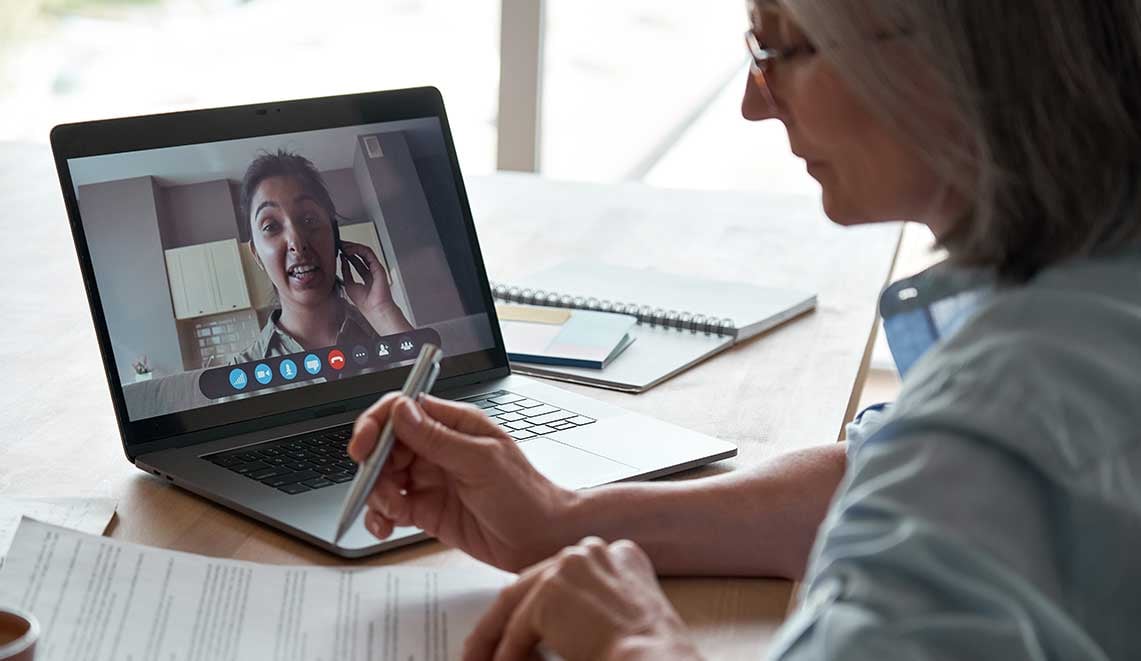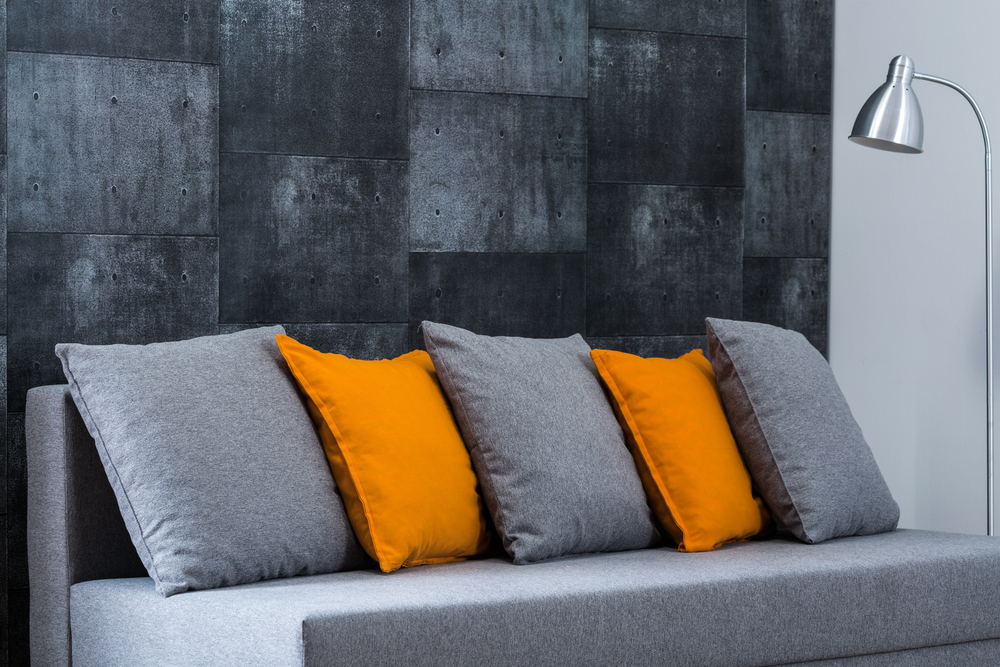
The new home sales world has been flipped on its head lately. COVID concerns have forced us to start selling in new ways. Changing systems and processes is always a challenge. But we're finally embracing technology that's been here all along to deliver a more efficient experience to our homebuyers. Sure, there's been a disruption in onsite sales and for some, it has negatively impacted their business. But we're a resilient bunch. Many builders have quickly utilized technology to create a new way of selling homes virtually. Buyers are more accepting of remote-communication tools than ever before. Our success will lie on who accepts virtual selling and who dismisses it as a temporary survival fad.
Think of it like this: there is the past normal, which we hope stays in the past (remember the old critical path of new home sales?). There is the now normal which some may say is a temporary situation based on survival. Then there is the future normal which is taking what we know now and refining it to define our future. It is ours to understand and define. But make no mistake, virtual selling, in some form, is here to stay.
So here are some tips for selling new homes virtually:
Tip 1: Master "The art of the virtual demo"
Gone are the days that the model home sells itself. Although some markets are hotter than ever, we need to continually be sharpening our sales skills or risk getting beat by the competition. As an industry these past years, we've relied on great model presentation with music, the fragrance of freshly baked cookies, and expertly staged homes to set the emotional stage for selling.
In a virtual sales environment however, we must know our plans intimately to paint a 3-D picture from a 2-D drawing. We must be able to articulate our unique sales proposition that shows a competitive advantage. We must understand our customers' motivation for moving to help them achieve their goals. Most sales pros have mastered the art of the demo with their model homes, now it's time to apply that same practice to your virtual models.
Take some time to sit down with the architect or purchasing manager to hear from them what's special or distinct about your plans.
 Start with the most popular ones. This way you learn the features worthy of pointing out while virtually walking a customer through a floor plan.
Start with the most popular ones. This way you learn the features worthy of pointing out while virtually walking a customer through a floor plan.
Not all your plans have a virtual tour on your site, so we need to talk about important plan details that would be missed by the customer, such as plate heights, floor breaks, dropped headers (to define spaces), and even the included gas range. These are just a few of the features not clear on a 2-dimensional floor plan drawing. But pointing them out will give the customer more reasons to love that Bennington plan, beyond just the bedroom and bath configuration. It will also establish you as their trusted guide in the process.
Points to Focus on when Selling New Homes Virtually
Remember, demonstrating a home should be an emotional experience and interactive. Some important features shown on a floor plan that may not be obvious to your customer without the benefit of a model home are:
- Exterior - Ridge vents for attic ventilation vs. the square vents that clutter the roofline.
- If you offer an 8' overhead garage door, this is not an obvious feature looking at your rendering
- Exterior siding materials with low maintenance characteristics are worth pointing out
- In the interior, dropped headers, shown by dotted lines, to define/divide living spaces
- Kitchen functionality, work triangles, cabinet arrangement, etc.
- Floor breaks and included flooring material
- Ceiling heights/design
- Countertop material
- If you have a covered back patio, at times this is not an obvious feature
- Primary closet arrangement with double rods and shelves vs. single rods and shelves.
These are all little nuggets of value that will add up. Livability is the number one feature home buyers are looking for. In fact, many builders refrain from labeling their floor plan rooms (since that predetermines the purpose of the room in the buyers mind). Allow your customer to determine the purpose. The idea is to discover those features that are important to your customer, and how they will be living in the home.
Tip 2: Make a recipe book
Create a binder with all your floor plans and your talking points on the features of the home. This will prepare you for when engaging a customer virtually. Success is born from proper preparation, appropriate planning, and certainly practice. Keep your recipe book handy and practice, practice your new virtual presentation.
Tip 3: Fluff the pillows on your web site.

How many times have you walked a model in the morning and fluffed the pillow on the sofa? You want to get it looking good enough to impress anyone that walks through the door. In the same way you should go through website as if you're a customer, and see what the perception is. Website accuracy is more important than ever for building trust. As a sales professional, you must take ownership of the accuracy of your website.
Many builders have now realized they need to step it up with better photography and more virtual tours. The first impression is no longer the model home, it's your website (your 24/7 model). It's now where 100% of your buyers are going to learn about you, and it must be depended on for accurate information, sold homes, inventory, included features, etc. Too often I see website information that's inaccurate or not up-to-date, causing buyers to lose confidence in you altogether. Those "pillows" need to be fluffed.
Tip 4: Get pumped for some FaceTime
While selling virtually, it can be tough to bring the same level of energy as an in-person presentation. Your customers take emotional cues from you. Great sales professionals maintain high energy levels while selling homes virtually. And, by all means, get over your video-phobia. I would never suggest doing a virtual meeting without using your video.
Simple tips for improving FaceTime or video meetings:
- Avoid distracting backgrounds. A simple wall behind you is often sufficient.
- Keep the camera at a high angle, meaning eye-level or above. It's much more professional (and flattering).
- Watch out for backlighting. Keep windows, lights, or brightly lit walls out of the background as a general rule.
- Check yourself in the mirror. Start your zoom or video up 10 minutes before the call to see how you look and make adjustments.
When you're comfortable with the technology, you're more likely to have higher levels of confidence and energy, which your buyers will appreciate.
Truth is, preparing for a virtual meeting with a customer is very similar to preparing for an in-person visit. Play out your pre-shot routine when getting ready for your virtual meeting. There is no place for "winging it" when you meet in person with a prospect. We don't wing it on a virtual call either. We lead and set an agenda that is designed to be flexible yet deliver a meaningful experience for your customer.
You must come prepared for your virtual meeting. Set the stage, share what you would like to cover. While you set the stage for the visit, finish with, "...and at the end, we can determine if this opportunity is for you." Normalize that it is ok to purchase a home virtually. Ask a lot of questions and highlight those features on the floor plan that may not be obvious to your customer. I might suggest recording some videos using a platform like BombBomb to "walk" your customer through your model.
Tip 5: Get up and show them around
 Instead of depending solely on virtual tours, companies like Wayne Homes in Ohio produced virtual walk-thru's of their model homes with the sales professional narrating all the way through. They have engaged with their homebuyers live via Zoom and FaceTime during these walk-thru's to be available to address any questions that come up during the tour. It is a great personal touch.
Instead of depending solely on virtual tours, companies like Wayne Homes in Ohio produced virtual walk-thru's of their model homes with the sales professional narrating all the way through. They have engaged with their homebuyers live via Zoom and FaceTime during these walk-thru's to be available to address any questions that come up during the tour. It is a great personal touch.
New Home Star made a quick adjustment to selling virtually. They created a fun contest with their sales professionals to adapt their live presentation to a virtual demonstration using video and their virtual tools. They did a lot of practice and role-playing and had a fun competition to refine the virtual process. Today, they use their videos as training tools for new sales professionals joining their team.
Successful Online Sales Counselors have been doing this for years as they have always lived in the virtual world. Delivery of this information takes practice just as though you would be walking your customer through the physical home.
Tip 6: Go virtual shopping
Another part of your preparation should be to shop your competition virtually. Learn how they connect with their customers (or don't). Find out how often they follow up with you. By knowing the experience your customer had with your competition, you'll be better prepared for when they engage with you.
Tip 7: Close early
The most frequent missed opportunity sales professionals make during a virtual sales presentation is not asking for the sale. One thing we need to realize is home buyers are more prepared to make a decision to buy on the first visit than ever before. Think about it.
Buyers have more info at their disposal than ever before. From the convenience of their smartphone, they can:
- View floor plans, renderings, virtual tours, matterports, learn about included features and pricing all without a sales professional.
- View the area for shopping conveniences, schools, churches and future developments.
- Understand what homes you have in inventory and when they will be completed.
- View your available homesites and in some cases, see the view of the site by clicking on the homesite.
The only thing left for a home buyer to learn is how much the options are which they are interested in and what the final price is.
When they finally visit your office, they are making a determination on you and your company, they only need to verify what they learned online matches what they see on site. This is why it is so important your website is kept current. Buying on the first visit is becoming more and more common. Asking for a commitment to buy on the first visit is not only necessary, but it is also expected - by your customer!
Try closing on the first visit
When speaking on this topic with my friend, Ingrid Prince, Sales Manager for Shaddock Homes in Plano, Texas, she made a very good point. She said, "As sales professionals, we would be best served to set the table at the beginning of the call and prepare our customers for a possible buying decision at the end of the meeting. In a virtual selling world, it is rare to have a "be-back." Our presentations need to be geared towards a question of ownership at the end of your engagement with your customer." These were great insights from Ingrid.
Again, prepare for a virtual selling event as you would for an in-person appointment. Along with the suggestions we made earlier in this article on preparation, it would be advisable to have multiple photos of homesites prepared to share with your customer. The homesite could be as much part of the decision to purchase as the home itself. Front and back views of the homesite will help move the conversation along.
Short of selling a home on the first zoom call (yes, it happens), you and your customer should never leave the meeting without understanding what the next steps are and when they are going to happen. If you apply this approach today, your sales cycle will shorten, you will be servicing your customer and you'll find more success for you and your customer.
This is no different in a virtual selling world. If you'd like to learn more about how we're helping builders find success in any market using online tools and sales strategies, just schedule a no-pressure, no-obligation consultation below.

